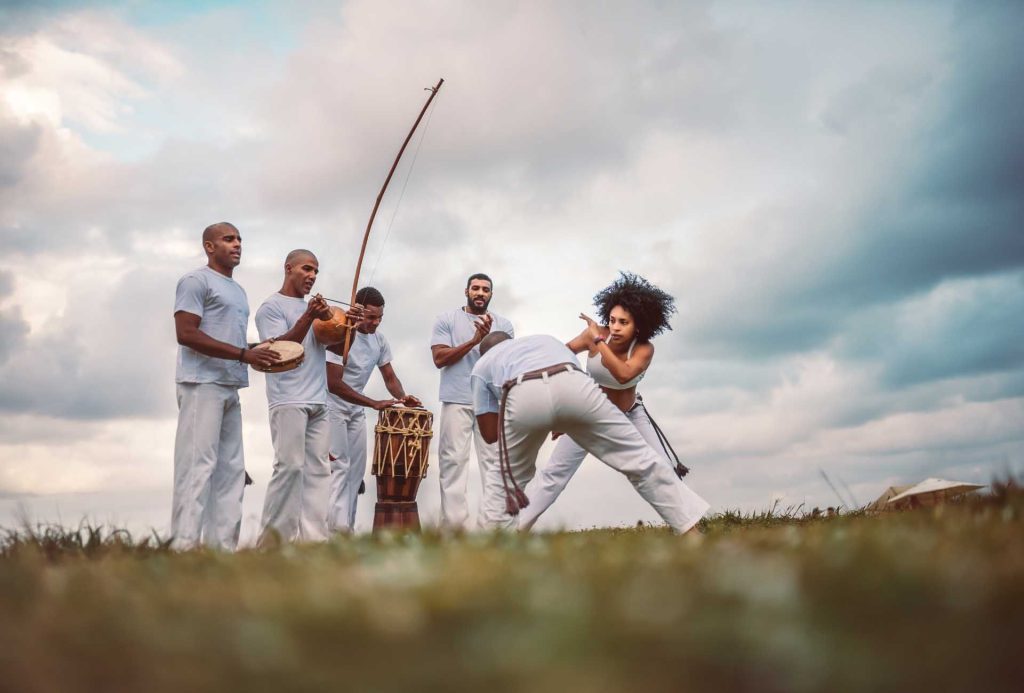Elio Cunanpio prépare la sortie d’un livre consacré à l’art de la peinture corporelle Emberá du Panama qui devrait paraitre durant le premier trimestre 2024, nous vous tiendrons informés de sa parution.
Visit Latin America : Bonjour Elio, pourriez-vous nous parler de l’origine de votre livre sur les peintures traditionnelles Emberá ?

Elio Cunampio : L’idée du livre est née de mon enfance dans une génération où la discrimination était un sujet évité par nos parents. Ils avaient souffert de discrimination en raison de leur tenue, leur langue, et leurs coutumes. Cette expérience les a poussés à ne pas nous enseigner ces aspects de notre culture pour nous en éloigner. C’est triste car ma génération a grandi avec un manque de connaissance de certaines de nos traditions. Plus tard, j’ai commencé à m’y intéresser et à effectuer des recherches. J’ai commencé par faire des tatouages de motifs non traditionnels avant de réaliser la beauté et l’importance de notre héritage Emberá. J’ai alors choisi de me consacrer uniquement aux peintures traditionnelles. J’ai remarqué l’absence totale de documentation écrite sur notre culture et j’ai décidé de créer ce livre aussi sous forme numérique, aujourd’hui tout est numérique, pour éviter que les générations futures ne rencontrent les mêmes difficultés pour apprendre et que ces connaissances ne se perdent.
VLA : Pouvez-vous nous parler de la manière dont vous avez approfondi vos connaissances sur la peinture corporelle, notamment à travers votre processus de recherche ?
J’ai appris grâce à des conversations avec des membres âgés de ma communauté, y compris ma famille. La recherche d’informations de manière autonome s’est souvent avérée difficile en raison du manque de sources fiables. En effet, dans notre culture, les connaissances sont principalement transmises oralement et par la pratique, plutôt que par des documents écrits. Ces échanges avec des personnes expérimentées et bien informées se sont révélés cruciaux pour comprendre en profondeur nos traditions et pratiques.
VLA : Quelle est la popularité de la peinture corporelle dans la communauté Embera aujourd’hui ?

La peinture corporelle n’était plus vraiment pratiquée lorsque je me suis lancée dans mes recherches. Toutefois, grâce à des initiatives comme celles de Mara (Mara Barrington est une artiste Emberá) et d’autres jeunes, elle gagne aujourd’hui en popularité. Avec l’aide des réseaux sociaux et de la photographie, nous avons réussi à intéresser plus de jeunes Emberás à cette forme d’art. Cette stratégie a également attiré l’attention de personnes extérieures à la communauté. Il est essentiel de continuer à documenter et à transmettre ces connaissances, pour que peut être un jour cela soit enseigné dans nos écoles.
VLA : Quelle est la signification derrière les motifs de peinture corporelle Emberá?
Les dessins sont étroitement liés aux esprits et au chaman, qui est le médiateur entre les esprits et la communauté. Il guide les rituels et les pratiques, recevant des instructions des esprits. Même les activités comme l’agriculture, la construction de maisons ou de bateaux sont influencées par ses conseils, souvent basés sur les phases de la lune.
VLA : Les peintures sont réalisées avec le « Jagua » pouvez-vous nous expliquer ce que c’est et comment il est utilisé ?
Le jagua est un fruit avec lequel nous fabriquons l’encre, il faut enlever la peau, le râper et le presser. C’est ainsi que nous obtenons le liquide qui est utilisé de différentes façons. Les femmes l’utilisent pour leurs cheveux, pour nettoyer la peau. Autrefois, lorsqu’un bébé naissait par exemple, une semaine plus tard sa mère le peignait en noir afin de le nettoyer complètement.
VLA : Dans quelles circonstances la peinture corporelle est-elle pratiquée dans le concept Emberá?

La peinture et le dessin ont des origines rituelles, liées à différents événements comme les rituels de guérison, d’initiation, de puberté mais aussi lors des fêtes et des deuils. Elle symbolise l’équilibre entre le spirituel et le terrestre, et la réincarnation dans différents plans spirituels. Nos motifs, souvent liés aux serpents, illustrent cette croyance.
VLA : Comment les motifs de peinture corporelle reflètent-ils le statut social au sein de la communauté Emberá?
Les motifs reflètent le statut social, comme être célibataire ou marié. Chez les jeunes, les motifs sont simples, mais ils deviennent plus complexes à la puberté. Les motifs varient selon le sexe et le statut marital, et il existe même des motifs spéciaux pour les chefs.
VLA : Pouvez-vous nous parler des rituels d’initiation et de leur importance dans la culture Emberá?
Il en existe une multitude. Pour vous donner deux exemples, l’un des rituels d’initiation consistait à peindre le nouveau-né garçon avec la poussière d’un animal choisi pour ses qualités, que le père va chasser. Si l’on voulait que l’enfant soit rapide, le père chassait un cerf, la poudre de l’os de l’animal servait de base à la peinture rituelle qui ainsi allait transmettre ses qualités à l’enfant. Pour les filles, le processus commence à la première menstruation et comprend des enseignements spécifiques aux filles, on lui rase la tête et quand ses cheveux ont repoussé jusqu’à la taille ont lui fait une frange. Le rituel se termine par une cérémonie où elle reçoit son premier motif de célibataire, très spécifique, elle ne l’utilisera ensuite plus jamais.
Vous pouvez suivre Elio sur ses réseaux sociaux : Instagram et Facebook







